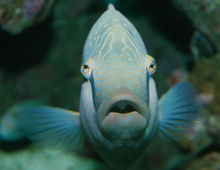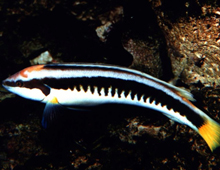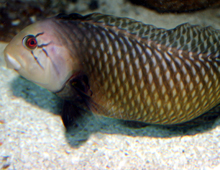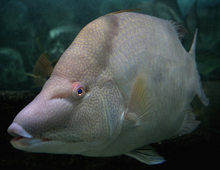
Named for its profile reminiscent of a French military cap, this fish is also known as the Humphead, and Maori wrasse (for its intricate cheek designs that look tattooed), and, because of its enormous size, Truck wrasse. The largest of all the wrasses, males can grow more than six feet in length and weigh over 300 pounds. In common with many other large Indo-Pacific reef fishes, it has been over-exploited by Chinese restaurants that serve live fishes. Trade of this animal is protected under CITES.






